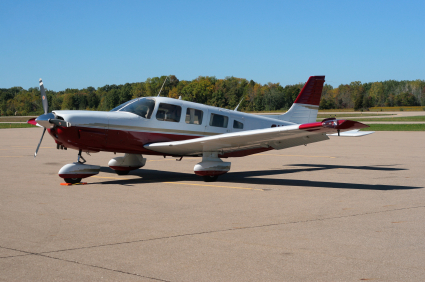Airborne!
Yesterday morning, a good friend took me flying in a single-engine Piper. It was great fun, and, in a very distinctive way, quite thought-provoking.
I am not a pilot. Understandably then, I considered myself a passenger. The pilot corrected me: I was crew. I needed to understand what was going on in the cockpit, and how the critical systems worked. I needed to be able to assist. We began by completing a very thorough pre-flight checklist, examining the aircraft and testing systems, inside and out. We discussed basic emergency procedures.
We launched into a bright, still morning sky, climbing to around 3000 feet. Flying at that altitude retains an intimacy with the landscape not found on commercial flights. While I was enjoying the view, the pilot was scouting locations for emergency landings, teaching me what to look for and explaining what must happen in the unlikely event of a power failure. We turned toward our first destination, the airport in St. Cloud.
As we made our way northwest, the pilot turned over the controls to me. I have flown a few times under similar circumstances with other pilot friends, and was thrilled to have the opportunity. I am not ashamed to admit: my exuberance far exceeded my competence. The plane flew in what the pilot politely called “S-turns:” unintentional squiggles across the sky. It was surprisingly difficult to keep the aircraft flying in the desired direction at the desired altitude.
Then the pilot delivered the critical correction: “try loosening grip on the yoke. Fly with your fingertips.” It made all the difference. With a little intentional subtlety, I was able to fly straight and level. With occasional course corrections for wind, we flew smoothly toward our destination. Ultimately, it felt like sailing a small boat, but in three dimensions.
I flew again on the return leg. On the way out, I relied primarily on the instruments. This time, I tried to actually use the windshield. What I found was quite surprising: I literally couldn’t reliably sense our altitude and direction changes without the instruments. My body and senses deceived me. I have read about this phenomenon, a cause of many small plane crashes, but to actually feel it was pretty jarring. At one point, as I looked out the window at the St. Croix River for just a few moments, the aircraft almost completely got away from me, climbing and turning rather sharply, despite my intention to maintain a steady course. Lesson learned: flying requires constant attention.
In case you hadn’t guessed, it’s metaphor time.
First, in any line of work it is worth asking whether we regard ourselves – or treat our teammates – as passengers, or as crew. Being crew definitely kept my head in the game. I was fully engaged, and even though I certainly was not in charge, I felt jointly responsible for our shared endeavor.
The experience also brought to mind my favorite sailing metaphor: it requires a strong, steady hand to make the ongoing small adjustments necessary to steer a straight course. It is often tempting to over-control, and easy to over-correct. The results are rarely consistent with our intentions.
Further, course adjustments are never-ending. Leadership, like piloting, requires sustained attention. People, teams, and organizations stray while leaders are looking elsewhere, confident that they have communicated their intent to others who are executing. There is no substitute for ongoing attention and communication.
By the same token, we need outside input to make sound decisions. Our perceptions, like our senses, can deceive us. We are inherently limited by our own perspective, and can only overcome that limitation by engaging others, and by establishing measures – our instruments – that provide critical, objective input to our decision-making.
Finally, our safety was protected not just by our pilot’s competence, but also by his sustained vigilance and reliance on sound processes. We are all human. Immutable practices, sound processes, and tools such as checklists prevent lapses in an environment that is ultimately unforgiving. Like business, for example.
A recreational airplane ride turned out to be a fairly intense experience. It was also immensely enjoyable. That’s no surprise: we all know that meaningful challenges can be great fun.



Leave a Reply
Want to join the discussion?Feel free to contribute!